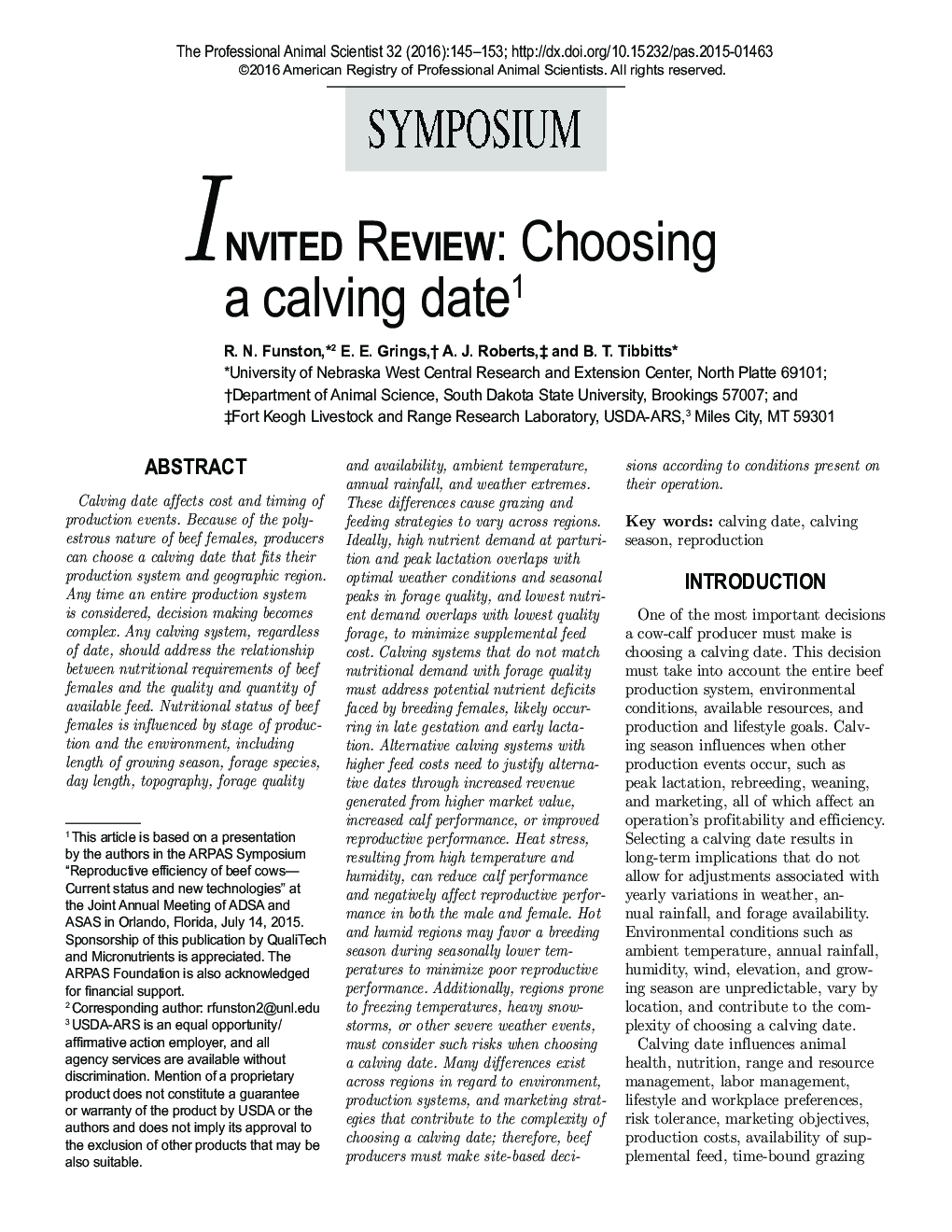| Article ID | Journal | Published Year | Pages | File Type |
|---|---|---|---|---|
| 10161718 | The Professional Animal Scientist | 2016 | 9 Pages |
Abstract
Calving date affects cost and timing of production events. Because of the polyestrous nature of beef females, producers can choose a calving date that fits their production system and geographic region. Any time an entire production system is considered, decision making becomes complex. Any calving system, regardless of date, should address the relationship between nutritional requirements of beef females and the quality and quantity of available feed. Nutritional status of beef females is influenced by stage of production and the environment, including length of growing season, forage species, day length, topography, forage quality and availability, ambient temperature, annual rainfall, and weather extremes. These differences cause grazing and feeding strategies to vary across regions. Ideally, high nutrient demand at parturition and peak lactation overlaps with optimal weather conditions and seasonal peaks in forage quality, and lowest nutrient demand overlaps with lowest quality forage, to minimize supplemental feed cost. Calving systems that do not match nutritional demand with forage quality must address potential nutrient deficits faced by breeding females, likely occurring in late gestation and early lactation. Alternative calving systems with higher feed costs need to justify alternative dates through increased revenue generated from higher market value, increased calf performance, or improved reproductive performance. Heat stress, resulting from high temperature and humidity, can reduce calf performance and negatively affect reproductive performance in both the male and female. Hot and humid regions may favor a breeding season during seasonally lower temperatures to minimize poor reproductive performance. Additionally, regions prone to freezing temperatures, heavy snowstorms, or other severe weather events, must consider such risks when choosing a calving date. Many differences exist across regions in regard to environment, production systems, and marketing strategies that contribute to the complexity of choosing a calving date; therefore, beef producers must make site-based decisions according to conditions present on their operation.
Related Topics
Life Sciences
Agricultural and Biological Sciences
Animal Science and Zoology
Authors
R.N. Funston, E.E. Grings, A.J. Roberts, B.T. Tibbitts,
